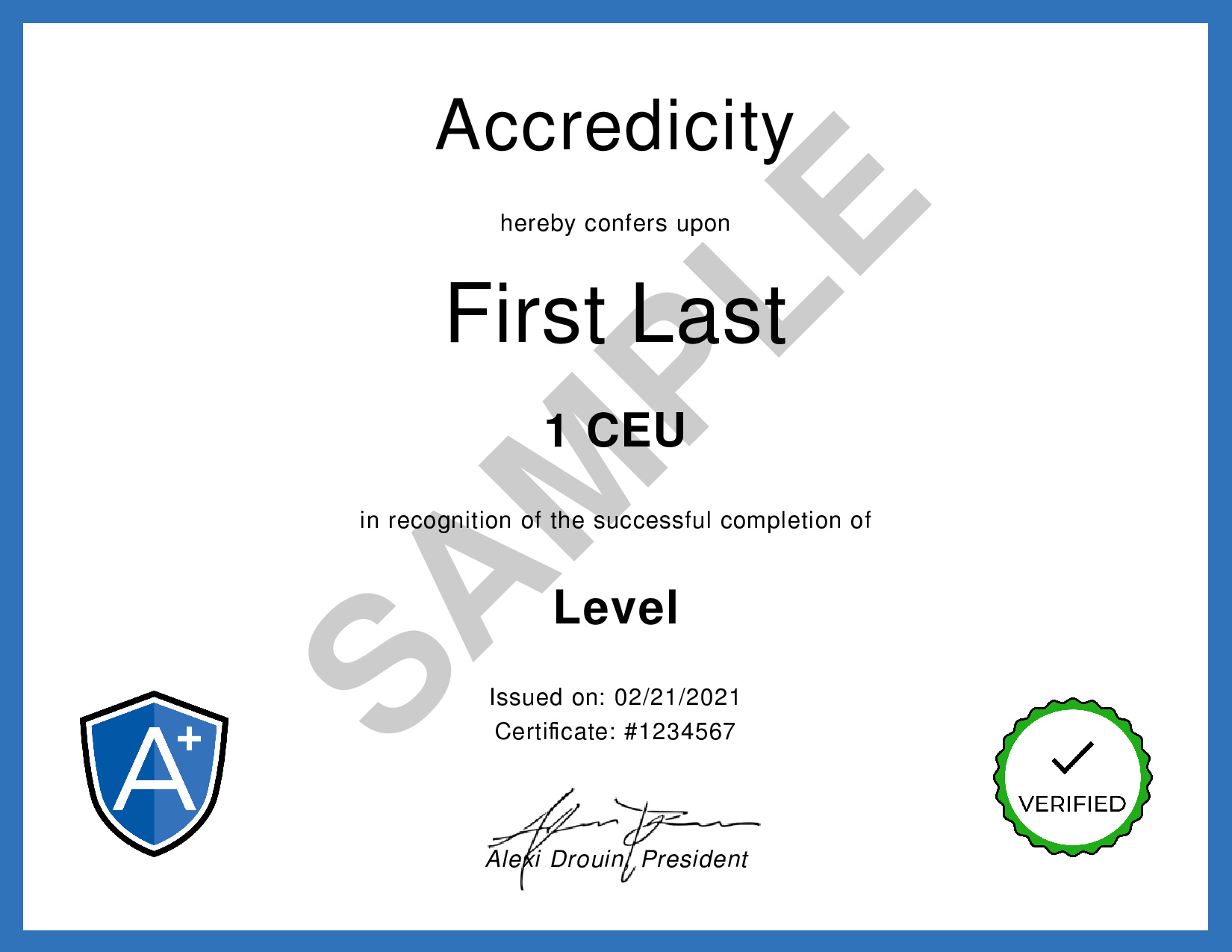How to Win a Negotiation | Big Think
We Make Your Education Count

Get the Credit You Deserve and Become the Most Attractive Job Candidate by Earning and Posting A+ Badges to Your Linkedin Profile.
Sign Up to Get Started at Accredicity
|
Discover the secrets of successful negotiation with experts in the field - learn how to win every time! The video "How to win a negotiation" by Big Think, featuring Chris Voss, Daymond John, Daniel H. Pink, Kevin Zollman, Dan Shapiro, Fredrik Eklund, and Sallie Krawcheck, discusses the importance of understanding what is in it for the other party as well as setting a floor and a ceiling to avoid being manipulated. It explores positional bargaining, interest-based negotiation, and the importance of mastering the art of saying no. The video outlines how to create an epiphany by summarizing the other party's feelings and interests and how to get them to agree by making them feel protected. Finally, it highlights the importance of understanding the other person's underlying interests and pushing for multiple requests. Learning Outline1. Understand the principle of "what's in it for the other party" when negotiating. Instructional ContentThe art of negotiation is an important skill to have in almost any industry. It can help you get the best deal for yourself and your business, as well as help you to build strong relationships with those you are negotiating with. In this Big Think video, various experts offer up their insights and advice on how to win a negotiation. Chris Voss, former FBI hostage negotiator, explains how understanding the power of “no” can be just as beneficial as understanding the power of “yes”. Voss advocates for understanding the other person’s needs and interests, as well as using no as a way to protect oneself from making a commitment that one may not want to make. Daymond John, founder of FUBU, shares his advice on understanding what the other side wants in order to come to a successful agreement. He suggests that instead of stating what one wants, it is more beneficial to ask questions to understand what the other side needs to reach an agreement. Daniel H. Pink, author of “Drive”, emphasizes that motivation and persuasion should not be done to another person, but rather it should be a collaborative effort. He believes that working together is the most effective way to get to an agreement. Kevin Zollman, professor of philosophy and game theorist, suggests that patience and an understanding of the game theory principles can help one get the upper hand in a negotiation. He explains that in negotiations, where there is a resource to be divided up, it is important to remain patient and determine a floor and a ceiling for the agreement. Dan Shapiro, founder of the Harvard Negotiation Project, explains the difference between positional bargaining and interest based negotiation. He suggests that interests should be the main focus instead of positions, as there are often many interests at stake when negotiating. Sallie Krawcheck, former CEO of Merrill Lynch, advises that one should never settle for just one request. She suggests that even if one’s initial request is accepted, one should come with a list of other requests that could potentially lead to more money or advancement opportunities. Fredrik Eklund, real estate broker, talks about the importance of setting a floor and a ceiling in order to prevent oneself from getting lost in the emotions of the negotiation. He believes that it is also important to remain emotionally detached from the negotiation while still being able to play emotional when Communication
|

Negotiating is like playing a game of cards, and it's important to know what cards you and the other person have up your sleeves. You need to think about what's in it for the other person, not just what you want. Don't focus on arguing over one single factor (like a number) but the underlying interests. Be creative in the things you ask for, come up with a list of requests, and be patient. Also, don't be tricked into saying yes right away - protect yourself and say no. Be prepared to listen and understand what the other person is saying so you can come to an agreement that works for both of you. Video Quotes1. "Successful negotiation is not about getting to yes. It's about mastering no and understanding what the path to an agreement is" - Chris Voss Related Quotes"There’s a lot more to negotiation than just getting a good deal. It’s really about understanding what the other side needs and recognizing the power of relationships." - Professor Guy Roberts-Kirchhoff "The goal of negotiation is to find a solution that is better than the alternatives." - Professor Guy Roberts-Kirchhoff "The most successful negotiators are the ones who are able to build relationships and fully understand the issues and needs of the other side." - Professor Guy Roberts-Kirchhoff Competencies1. Negotiation Learning Outcomes1. Analyze the key differences between positional bargaining and interest-based negotiation (Bloom’s: Analysis). Sample Answers1. I learned that successful negotiation is not just about getting to yes, but mastering no and understanding the path to an agreement. To do this, one should focus on the underlying interests of the other person and not just their positions. This helps to create empathy and a stronger bond between the two parties. 2. I also learned that it is important to have a floor and a ceiling when negotiating. This ensures that one does not get manipulated or lose themselves in the emotions of the negotiation. Additionally, one should never take no for an answer and come prepared with multiple requests. 3. Lastly, I learned that when negotiating one should never push for a yes and instead use a no to make the other person feel protected. This can be achieved by summarizing the situation in a way that the other person is blind to and creating an epiphany. Chris VossChris Voss is a former FBI hostage negotiator who is now the founder and CEO of the Black Swan Group, a corporate negotiation and consulting firm. He is an expert on How to win a negotiation due to his experience in negotiating high-stakes deals and resolving complex international conflicts. Chris Voss is also an adjunct professor at Georgetown University’s McDonough School of Business and the author of Never Split the Difference, a book on negotiation. He also has his own podcast, “The Art of Negotiation.” Learning DesignCommunication is an essential skill for success in both our professional and personal lives. Negotiation, decision making, influence and persuasion are key components of effective communication and are important competencies to learn. Negotiation is an important communication skill because it helps us reach agreements with others in a way that is mutually beneficial. Negotiation offers the opportunity to compromise and find a solution that works for all parties involved. Decision making is essential when it comes to making decisions in the workplace or in our personal lives. It involves considering the facts, weighing the pros and cons, and ultimately making a decision. Good decision making skills help us make sound decisions quickly and efficiently. Influence and persuasion are important communication skills because they help us to convince others to take action or accept an idea. The ability to influence and persuade can be a powerful tool when it comes to achieving our goals. AssessmentMultiple Choice Exam Question: Answer: B. Positional Bargaining QuestionsCommon hypothetical questions: Real-life application questions: KeywordsNegotiation Strategies, Interest-Based Negotiation, Win Negotiation, Commitment vs. Confirmation, Understanding Other Party, Positional Bargaining, Set Floor & Ceiling, Patience in Negotiation Facts1. Negotiations can be successful when parties focus on underlying interests rather than positions. Trends1. Research the other party before negotiating: Before entering into a negotiation, it is important to research the other party and understand their interests and motivations. This will help to inform your negotiation strategy and ensure that both parties benefit from the outcome. 2. Establish a floor and ceiling price: Establishing a floor and ceiling price before entering into a negotiation can help to ensure that neither party is taken advantage of. It also helps to structure the negotiation and provides a clear indication of when it is time to walk away from the table. 3. Ask questions: Asking questions can help to uncover the interests and motivations of the other party, which can be used to craft a more equitable agreement. Questions can also help to uncover additional interests that may be beneficial to both parties. 4. Leverage emotions: Negotiation can be an emotionally charged situation, so leveraging the emotions of both parties can be a powerful tool. Understanding the emotions of the other party can help to drive the negotiation in a desired direction. 5. Make multiple requests: Instead of making one request, such as asking for a raise, make multiple requests. This can help to ensure that your needs are met and also provides the other party with additional options to consider. SourceThis learning instructional guidance was formulated using the GPT-3 language model created by OpenAI. ShareNegotiating is hard, but it doesn't have to be! Follow these top tips from negotiation experts and you'll ace it every time. #Negotiation #Success #Win #Winning #Business #Tips #Empathy #Patience #Interests #Goals #Motivation #Persuasion @Accredicity |










 22 Creds - Communication
22 Creds - Communication




